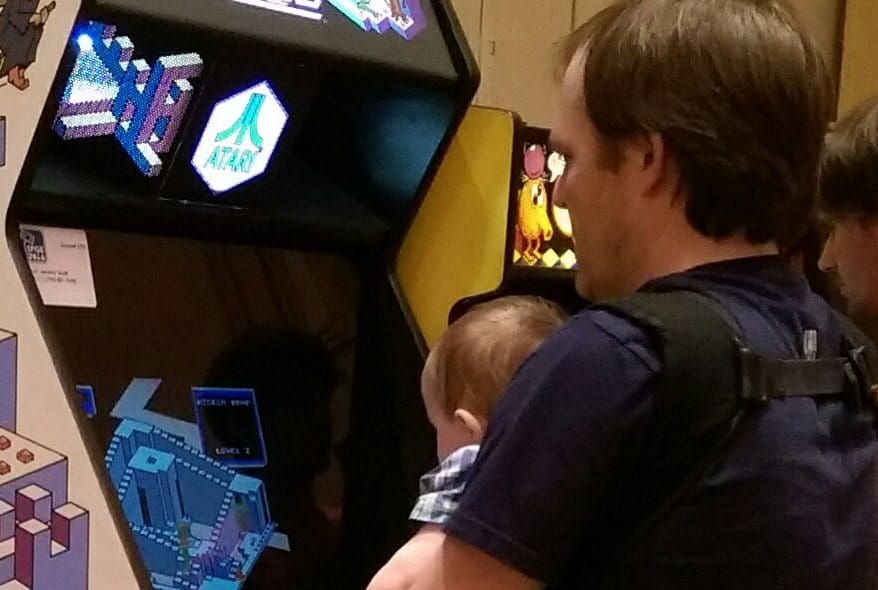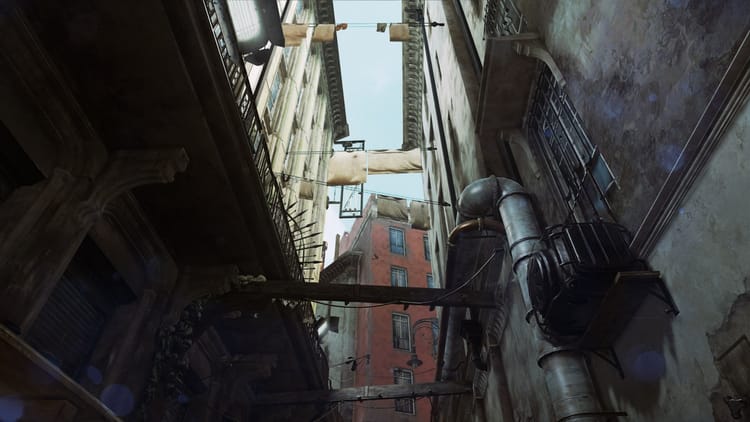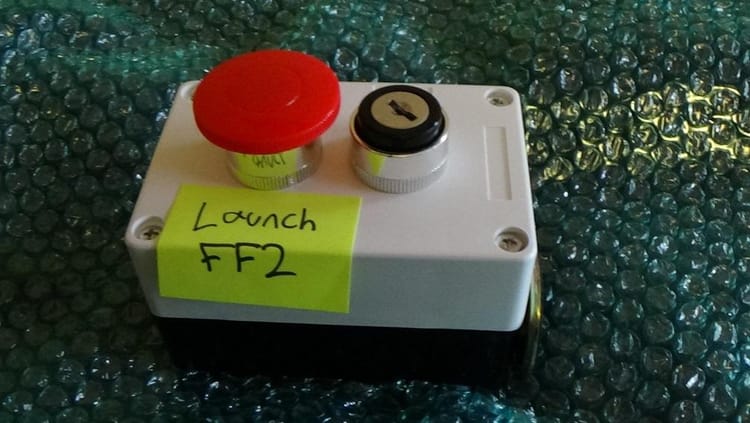The Southern Fried Gameroom Expo is a reminder of what we’ve lost

Long cast as the home of hospitality, green tomatoes, and civil war memorials, the South is pushing back against a more current War of Northern Aggression. Gaming expos born north of Mason-Dixon line have prospered: Penny Arcade Expo began in 2004 outside of Bellevue, Washington before expanding to Boston, Australia, and Texas. Gen Con, founded in Wisconsin by the father of Dungeons & Dragons, Gary Gygax, focuses on tabletop gaming and calls Indiana home. The largest and oldest retro games convention is still California Extreme, set in Santa Clara the past 20 years. But Southerners love games, too. And Preston Burt and others want the world to know.
That’s why they founded the Southern Fried Gameroom Expo in 2014. I attended the third annual gathering of pinball fanatics and retro game enthusiasts in Atlanta, now held in the Renaissance Waverly Hotel, a building aptly named for the festivities. When you walk inside and spy a pin you haven’t played in years, you might just feel born again.
///
Roam the 16,000 square feet of soft carpet in the hotel Grand Ballroom and see the clash of two very distinct forms of luxury. Above, light shines down out of giant modern art chandeliers, each a square of over one-thousand trapezoidal crystals suspended from the ceiling. Below, hundreds of machines popular in the Reagan Era glow and throb. Each light source is borne from an unnecessary burning of fossil fuels. Each stems from one form of aristocracy or another: such posh lamps once lit the dusty wigs of politicians, just as the flickering strobe of The Getaway: High Speed II (1992) shrunk the pupils of teens with nothing better to do. We’re bored, sustenance so easily provided. We’ve beaten the animals. We’ve earned this temptation.

Many are here to play and remember. A proud few are here to compete.
“You gotta take a breather now and again to reassess,” Tim says, in a red t-shirt and khaki shorts. “Get some food. Then go back in.” He’s a competitor in the Pinvasion III tournament, an event sanctioned by the Professional and Amateur Pinball Association (PAPA) that’s going on concurrently with the expo. Not all advice is as useful.
“Fuck!” Jack steps away from The Walking Dead pinball table by Stern. He turns 180 degrees, faces away from the glass, and stares at the plush carpet, its design like stepping on a room-sized roccoco burgundy tie. His last ball just drained, his score lower than he’d liked. His black shirt was a good choice—a deep solid hue provides less distraction against the reflecting surface. But the tight jeans should have been left at home. Many of the competitors here are in cargo shorts or relaxed fit denim; this is not a style competition. This is all about the silver ball.
And silver hair. Out on the expo floor where every game is set to FREE PLAY, the wily veterans are learning their youngins something fierce. One older gentleman stands in front of Safe Cracker (1996), an ambitious pinball contraption with a complicated back-glass of circular light. His orthopedic shoes remain planted. His right hand keeps moving up against the machine’s right side, above the flipper button—it’s hard to say whether this is a palsy or the calculating jiggle of a man who knows how to nudge the unit just right to rack up a high score. He does well. I step up and lose three balls nearly immediately.
A kid hops up to take my place. I stand over him, risking predatory concerns from a nearby parent. “I was never here,” his shirt proclaims. He’s a full-body player; each slap of the flipper is accompanied by a tiny jump and a leg kick. His shoulders swivel. The Dot Matrix display fills in with a threat: “Guard alerted to your presence,” it reads. The kid shrugs. No big deal. He’s cracked this safe before. The Multiball begins. He keeps it going as long as he can until the final ball drains.
the silver ball draining down between your impotent flippers
“Oh!” he yells out, one last jump. Final score: 514,000. The young one has bested both of his elders. Hope remains for the future.
People react the same way in the Free Play area as those playing in the tournament. Even with nothing on the line, the sight of the silver ball draining down between your impotent flippers is a painful vision. Most play with humility and joy. Some smack the top of the machine upon each lost ball, a curse bellowed aloud or swallowed under their breath.
One gentleman in front of Bram Stoker’s Dracula (1993) is zoned in. Between rounds he shakes out his hands. He wipes sweat from his brow. His time spent in front of an illustrated Gary Oldman bears no consequence other than the memory of a high or low score. There’s something melancholy about the urgency with which he, and others, manipulate these slanted obstacle courses with a single sphere and some physics. But also inspiring. Perhaps this is their only venue in which to seek out victory. Maybe this mechanical realm is a safe space, a dumping ground for mounting frustrations. Better here than at home.
On Day Two of Pinvasion, pressure mounts. A dude in a red cap and low-slung jeans steps away from the Congo (1995) table and points his finger to the ceiling. He holds it there, walks away slowly, then pounds his first into his hands with a slight grimace. From a distance it’s hard to tell if this is frustration or triumph. The smell of ketchup hangs in the air. Later I see another player point in the air, and I realize it’s to signal the organizers over to record the score, good or bad. I have much to learn.
///
Elsewhere in the hotel, panel discussions and Q&As are scheduled. One is with the actor who played the boy in The Last Starfighter (1984). But conversations in quiet rooms do not seem to be the point of the Southern Fried Gameroom Expo. Step into the main expo floor and the reason becomes apparent: Over 200 pinball tables and arcade cabinets, turned on, blinking and bleeping, awaiting your frenzied inputs. One back room focuses on fighting games, those one-on-one street fights that dominated the ‘90s scene. The machines are lined up side-by-side; this is important. There must be the threat of shoulder-rubbing with a stranger. This is what an arcade, and by extension the SFGE, offers that a 52” LED 4KTV with surround sound can not. There is an intimacy to this other kind of space invasion. Two of you stand in front of a hulking machine the size of a hot refrigerator, staring into the burning glass. Your elbows clash. On-screen, your digital stand-ins clench fists and beat each other’s faces pulpy. One is the victor and stays. Two humans have shared something impossible to contract over Wi-Fi. Tonight, the disease is spreading.

But aside from competition and nostalgia, there is a third reason to attend: commerce. Almost each machine includes a “For Sale” sign, with the owner’s name and phone number. And this is where SFGE and a growing number of expos separate themselves from the more commercial, industry-driven shows attended by current publishers. The point of shows like this, and Portland Retro Gaming Expo (October 21-23), plus Free Play Florida (November 11-13), is not to sell you on a promised future but keep the past alive. And plugged into your outlet. These are singular pieces of culture impossible to replicate as downloadable apps. These have weight and electrical cords. They are anachronisms. Inside these pop-up expos in hotel ballrooms, for three days at a time, we’re reminded how far this art has evolved, and how much we’ve lost.
A small crowd forms around a man in overalls playing a game I’ve never seen before, Ice Cold Beer (1983) by Taito. You maneuver a metal rod up a vertical playfield using two joysticks, one controlling the left axis and one controlling the right. A ball rests on the rod—the goal is to drop the ball into a sequence of holes, each numbered and lit up. Imagine a 2D version of those old wooden labyrinth games and you’re close. It’s a simple concept, powered by gravity and inertia, but as I push the ball slowly upward, with a small crowd watching, my heart pounds.
///
This and other electro-mechanical wonders like SlugFest and Nudge It and Bell Ringer make me mourn the days before electronic games had been codified into the narrow confines of today’s industry. It’s true that in 2016, there are more games being created than ever before. But many are limited to the predetermined inputs of 1) joystick + button controller, 2) mouse + keyboard, or 3) capacitive touch-screen. Much can be done with these as the default. But too many remain bound by expectations and standards. Arcade games were built for a singular purpose, their controls and screen custom designed to deliver an idea. Modern games are grafted onto devices built for a million and one pre-existing conditions.
the power of inefficiency
And while experimental games made for singular experiences continue to be made and shown-off at spaces like IndieCade or ALT.CTRL.GDC, they are invariably niche, never meant for wide distribution. Yesteryear’s arcade oddities were set up in pubs and pizza parlors. You now have to seek out the strangeness of Crank Tank (2015)—35 years ago, you could drop a quarter in the washer at your local laundromat and wait out the cycle in a makeshift tank cockpit playing Battlezone (1980). Now you spend that time looking at the same 5” screen in a billion pockets across the globe. Events like the Southern Fried Gameroom Expo remind us of the power of inefficiency.
///
On my way out, I pop into the Classic Console room, featuring systems from the Magnavox Odyssey to the Wii. The last station before the door out is a standalone Ultra Pong machine; a kid no older than three is twirling the paddle controller and watching the vertical bars slide up and down. I watch for a moment. He turns and says, “You can play with me.” No question mark in his voice: this was not a request but an invitation. I dutifully pick up the controller.
As a college instructor in my day job I’ve learned that grade inflation is real; expecting to succeed with no effort perverts our children’s sense of work ethic. This pre-pre-schooler was no exception. I wanted him to grow up knowing the true taste of loss so that it’s sourness would spur him onto greatness. I beat him in three straight games: 15-6, 15-9, 15-1. It wasn’t his fault—this machine was born 40 years before he was, and his motor skills are still developing. The beauty of the Gameroom Expo is that it allows the present to visit the past again, or to see it for the first time. On this day, the future wins: With his last and only score, the child points at the “1” and says, “Gotcha!” Even in victory the old man has been defeated. The child giggles, savoring the hard-earned goal.



